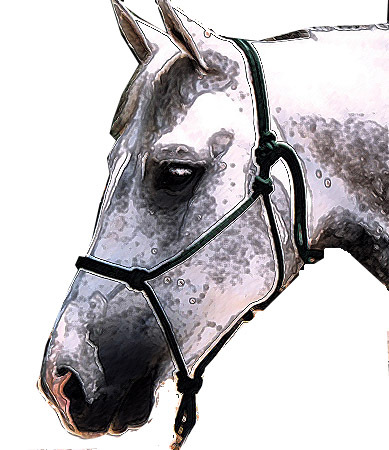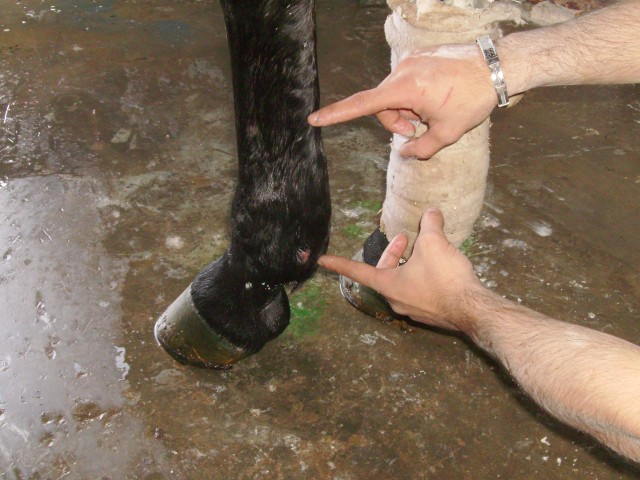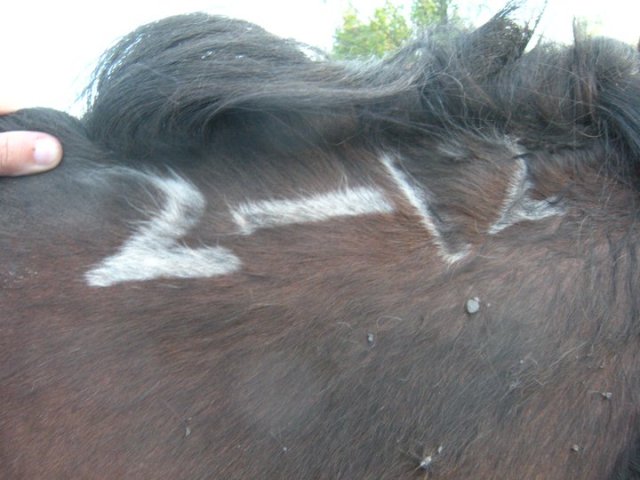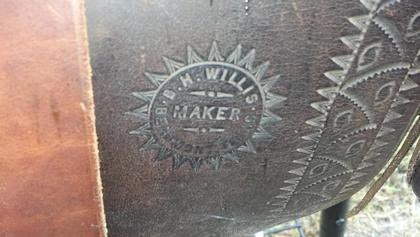QuestionhI
I have always been faninated by race horses.
Can you describe the difference from a trotter verses a pacer?
Why do their lungs bleed as I have heard, how do they heal up?
Thanks for your time.
AnswerHi Sue.
The standardbred is a wonderful animal! A pacer moves his legs laterally (left front and left rear move forward at the same time, followed by right front and right hind). A trotter is sometimes called "diagonally gaited": left front and right hind move together followed by right front and left hind. For more info on the breed and harness racing, check out www.ustrotting.com. If you go to the virtual links link on the left hand side of the page (almost to the bottom) check associations and registries and you should be able to find info on standardbreds as pleasure horses (very popular) and the Standardbred Retirement Fund. Not sure if you're aware of it or not, but the riderless horse at President Reagan's state funeral was a retired standardbred racehorse.
The proper term for bleeding is "Exercise Induced Pulmonary Hypertension" or EIPH. There are a few theories why it happens but the end result is that small blood vessels in the lungs rupture when the horse is involved in strenous exercise. Depending on the severity of the bleed and the cause, a few weeks of R&R can often heal EPIH. Most often unless the bleeding is severe, the horse is treated with Salix (Lasix for horses) and continues their normal activity.
Hope this info helps. If you have any other questions, be sure to give a shout!
Anne Stepien
Sue,
This was in the news today; thought you might be interested.
Anne
Standardbreds to serve Japan's Imperial Family
Tuesday, November 2, 2004 - from Harness Racing Communications
Sgt. York, who in his previous career competed in harness racing at Freehold and Yonkers, showed the world the versatility of the Standardbred when he served as the riderless horse in President Ronald Reagan's funeral procession. Now, a couple of pacers from California will travel to Japan to serve in ceremonies for the Imperial Family.
Texas Boom Boom, a 12-year-old gelding owned by Vicki Evans, and White Face Lady, a four-year-old mare owned by Gary Pond and Jill Warren-Pond, were scheduled to arrive in Japan on Monday morning to begin their new careers in service to the Emperor and Empress.
The two pacers were selected to participate in a ceremony called "Horohiki," which involves carrying military equipment on horseback and which over the centuries has evolved into an equestrian art form. The horses used in Horohiki performances are trained to pace, which enables the pennants carried by the riders to stream gracefully out in the wind.
"It's pretty exciting," said Evans, a Hayfork, California resident who has spent two decades promoting Standardbreds for careers beyond the racetrack. "Many people don't realize what wonderful, great horses they are. They are such kind, versatile horses. They're terrific for endurance, hunter-jumper, English, Western, trail horses, and pleasure or competitive driving aside from being great racehorses. I'm happy if this helps promote them for life after the track."
Texas Boom Boom, who won two races in his three-year racing career, last competed in 1998. Evans and her sons, Doug and Tom, in addition to breeding and raising Standardbreds at their Tule Creek Ranch, work with adoption programs to place horses following their racing careers. Evans trains her horses under saddle using Parelli Natural Horsemanship method.
"He's a very handsome gelding," Evans said. "I really kind of hate to lose him. I was going to use him for a driving team. But they were very pleased with the level of training of the horse. That's really what they were looking for. He needed to be a free-legged pacer and bombproof."
White Face Lady, who was bred by the Ponds, raced just once, in 2002. Gary Pond has been involved in harness racing for more than 20 years and the Ponds have also placed numerous Standardbreds after their careers on the racetrack have ended.
"It's kind of cool," said Jill Warren-Pond, who lives in Lake View Terrace, about 25 miles north of Los Angeles. "Our racehorses, especially the ones we've bred, become our friends, so it's hard to let go. But you can't keep all of them, and she wasn't going to make it as a racehorse, so she needed another life. We have found Standardbreds make excellent riding horses, as well as pleasure driving and competitive driving horses.
"She's very flashy looking and she looks really good under saddle," she added about White Face Lady. "She's got some fire, but that good Standardbred temperament. She can look the part and she loves attention and people. I know she will do well for them."
Barry Meyers of U.S. Equine, which was leading the search for horses, contacted the Ponds and Evans. The company is based in Westlake Village, California and is involved in international transport. Joe Kelley of U.S. Equine said Standardbreds were selected because of their disposition.
"Any breed trained in pacing was what we had in mind," he said. "But Standardbreds were the best option."
Susumu Shinomiya, the manager of the equitation section of the Japan Racing Association and a Grand Prix level dressage competitor, came to California to ride the horses and determine if they were acceptable. In addition to being used for Horohiki performances, the Standardbreds will be kept at a horse park so visitors can learn about the breed.
"They had searched for horses in Europe and the United States," said Evans, who lives about 100 miles east of Eureka. "I'm really off the beaten path. They might be back next year and take two or three more. In my own way, I've tried hard to place Standardbreds after their racing careers. I want people to understand how wonderful they are."

 training an older arabian
QuestionHi i have an 8 year old arabian who has been un
training an older arabian
QuestionHi i have an 8 year old arabian who has been un
 Horse swallen ankle problem
QuestionQUESTION: Hi.I am not much in to horses but a g
Horse swallen ankle problem
QuestionQUESTION: Hi.I am not much in to horses but a g
 13(?) year old Standardbred mare
Question
Brand
A friend of mine just pulled a mare from
13(?) year old Standardbred mare
Question
Brand
A friend of mine just pulled a mare from
 lunge lines made out of cotton
Question
lunge line cotton lead rope
Hi L
lunge lines made out of cotton
Question
lunge line cotton lead rope
Hi L
 B.H. Willis Maker saddle
Question
Saddle name Top view saddle
I am
B.H. Willis Maker saddle
Question
Saddle name Top view saddle
I am